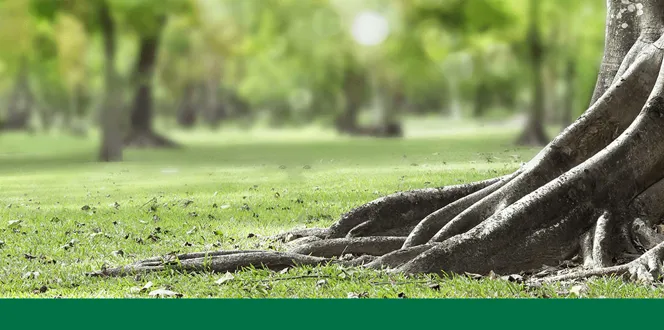You might think your home landscape soil is just a bunch of dirt, but it’s so much more than that.
Soil is populated by microorganisms that serve key roles in your home garden. If you build a good soil habitat with a balanced pH, adequate nutrients, good structure, and enough organic matter, those microbes will flourish and help to protect and nourish your plants.
Unhealthy soil that has been compacted, stripped of organic matter, and lacking in nutrients and oxygen will limit your plant growth, root development, and overall health.
Let’s learn how to improve soil quality and how to keep the soil fertile so your plants can thrive.
Different Types Of Soil
Understanding soil care starts with knowing what type of soil you have.
Your soil composition includes mineral and organic components, water, and air (mostly oxygen, carbon dioxide, and nitrogen). The organic components are made up of living and dead organisms like fungi, insects, and humus formed from decomposed plant debris that recycle filter, release, and store nutrients.
Your location will impact your soil type, which will be one of the following:
Clay – A heavy soil made up of the smallest particles that limit air movement. This soil has good water storage qualities, but that can make it hard for air to penetrate it. Clay soil can benefit from organic matter such as mulch, biochar, and compost to lighten it and improve its structure.
Sandy – A light soil that is made up of small particles of weathered rock. This soil tends to have low nutrients and poor water-holding capacity. Sandy soil heats up quickly and can dry out in the summer, so it needs regular light watering in warmer weather. Sandy soil can benefit from organic matter to improve nutrient and water-holding capacity.
Silty – While rich and fertile, this soil has much smaller particles compared to sandy soil and a smooth and fine quality. It is sensitive to erosion and typically needs regular aeration and the addition of organic matter and compost annually, but most importantly it needs to remain covered by either vegetation or mulch at all times. Silty soil holds water better than sandy soil.
Chalky – This larger-grained soil dries out quickly in warm weather and cracks easily. Since it holds onto nutrients versus circulating them and is more alkaline, which can lead to yellowing plant leaves. This soil usually needs organic matter or fertilizer additions, but not extra lime since it’s already present in higher quantities.
Peaty – This darker soil can feel damp and spongy to touch due to its higher levels of moisture-loving peat. It heats up quickly in spring and can retain water, so it usually needs adequate drainage. Since this soil is acidic, it can use the addition of organic matter, compost, and lime to balance it.
Loamy – This even mix of sand, silt, and clay has a balanced texture, and tends to form good structure, retaining moisture and nutrients while maintaining drainage. Replenish with organic matter to maintain structure and nutrient levels.
What Makes Soil Healthy?
Healthy soil makes for healthier plants.
But what does soil need to stay healthy? Plants obtain nutrients from the soil they grow in. To get these nutrients, the soil needs minerals, organic matter, and added fertilizer to correct deficiencies.
Healthy soil will have a mix of nutrients, proper pH, good drainage and water-holding ability, and air movement.
To find out the current state of your soil and what your soil might be lacking, conducting a soil test is a good idea. This way, you can get a clear picture of the amount of organic matter, pH, and the level of nutrients in your soil.
Signs Of Unhealthy Soil
You might be wondering if you have unhealthy soil.
When you pull up a plant, poor soil will come up in hard clumps and you’ll notice stunted root growth.
You might also see that rainfall or irrigation will gather on the soil surface if it’s too compacted, signaling poor drainage. Soil that is dry or cracked also lacks water. Soils remaining wet for long periods might be grayish in color.
Earthworms are a good sign of adequate soil health, so if you don’t see any in the first foot of soil, that’s another sign of potentially unhealthy soil.
You might also notice signs in your plants when your soil is lacking adequate health. This includes poor growth, smaller leaves, branch dieback, and failure to respond to proper care.
How To Improve Soil Quality
A healthy soil ecosystem can give your home landscape plants easier access to air, water, and nutrients. Therefore, building healthy soil is key.
Follow these tips for healthy soil:
Add organic matter to improve soil’s physical properties like air and water availability to encourage healthy root growth and reduce soil compaction.
Cover soil with mulch to prevent erosion, increase organic matter, retain soil moisture, moderate soil temperatures, and reduce weeds.
Add a biochar soil amendment to boost aeration and drainage for the long term.





